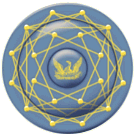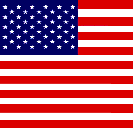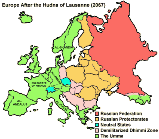A History of Optics, Part 3
by Baron Bodissey

The noted blogger Fjordman is filing this report via Gates of Vienna.
For a complete Fjordman blogography, see The Fjordman Files. There is also a multi-index listing here.
Part 1 of this series is at Atlas Shrugs, and Part 2 is at Dhimmi Watch.

There is still much we do not know about optics in the ancient world. Every now and then, claims about the alleged existence of ancient eyeglasses or even telescopes have surfaced, but we currently possess no solid evidence to back these claims up, and if such devices ever existed they were later lost. The earliest known lenses were made of rock crystal, quartz, and other minerals, and have been used as burning glasses to concentrate the sun’s rays and use them for heating. The first lenses used as a reading aid were probably the so-called reading stones, magnifying glasses known in the Mediterranean region from about AD 1000. The Visby lenses, found in a Viking grave on the Swedish island of Gotland in the Baltic Sea, date from about the eleventh century AD and were made of rock crystal. The first eyeglasses had quartz lenses which were set into bone, metal or even leather mountings, but lenses were later primarily made of glass. We have definitive proof of eyeglasses for the correction of eyesight only from Europe, from the late thirteenth and early fourteenth centuries onwards. As scholar Joel Mokyr says (pdf):
[G]lass, although known in China, was not in wide use, in part perhaps the result of supply considerations (expensive fuel), and possibly in part due to lack of demand (tea was drunk in porcelain cups, and the Chinese examined themselves in polished bronze mirrors). Some past societies might well have made lenses given enough time and better luck: Islamic civilization for centuries had a magnificent glass industry, yet never came up with either spectacles or a telescope, despite the ubiquity of presbyopia and a strong interest in astronomy. In the later Middle Ages, glass making in the Islamic world declined, in part because of the devastation inflicted by the Mongols. But elsewhere knowledge must have played a central role. Tokugawa Japan had a flourishing industry making glass trinkets and ornaments, but no optical instruments emerged there either until the Meiji restoration. Not having access to the Hellenistic geometry that served not only Ptolemy and Alhazen, but also sixteenth century Italians such as Francesco Maurolico (1494-1575) who studied the characteristics of lenses, made the development of optics in the Orient difficult. The probability of a microscope being invented by someone who does not have access to geometry is very low.
It is possible that the first eyeglasses were made through trial and error by practical artisans with limited mathematical knowledge. Kepler in 1604 published a book about optics and explained that some people have bad eyesight because imperfections in the eye cause the rays to be focused at a point either in front of or behind the retina. He went on to describe how eyeglasses work to correct these defects, and a few years later developed his ideas to explain how the newly invented telescope worked. In other words: People had used eyeglasses for several centuries without having a full theoretical understanding of how they functioned. Nevertheless, for the progress of optics, access to Greek geometry was certainly an advantage.
The Kangxi Emperor (1654—1722) of the Manchu Qing Dynasty, the longest-reigning Emperor in China’s history and often considered one of its best, was an open-minded man. Jesuit missionaries were involved in the glass workshop that he established in 1696, for instance Kilian Stumpf (1655—1720) who worked to produce decorative glass under imperial auspices in the early 1700s. Glass production reached its high point in the 1750s when Giuseppe Castiglione (1688-1776) became involved in decorating European-style palaces and gardens for the Lofty Pavilion, but after this the interest in glass in China declined again.
Both glass and Greek optical theory were available to the Romans, yet as far as we know, Italians during the Roman era never made eyeglasses. Italians during the medieval era did. Scholars Alan Macfarlane and Gerry Martin place great emphasis on the development of clear glass technology and argue that this made an essential contribution to the Scientific and Industrial Revolutions; without it there would not have been barometers, thermometers, chemical laboratory equipment etc. However, they are careful to point out that glass was an enabling device, perhaps a necessary cause for some later developments but by no means a sufficient one. Even if clear glass had been widely available in Asia, it is not certain that it would have led to the discovery of the microscope or the barometer. In the East, there was not the same interest in deriving knowledge from nature. Medieval and early modern Europeans had both the glass and the particular curiosity. The most difficult case to explain is why eyeglasses, and by extension telescopes and microscopes, were not invented by Middle Eastern Muslims, who had access to essentially the same body of knowledge as did Europeans and produced a gifted optical scientist in Alhazen.
The first true eyeglasses are believed to have been made in the late thirteenth century AD, perhaps in the 1280s in northern Italy. The American scientist and inventor Benjamin Franklin (1706—1790) invented bifocals in the eighteenth century. Vincent Ilardi explains in his book Renaissance Vision from Spectacles to Telescopes, page 64:
- - - - - - - - -
As in Italy, documentary evidence and artistic representations of eyeglasses in the fourteenth century are relatively few in other European countries. They occur much more frequently from the early fifteenth century onwards with the massive diffusion of spectacles. There is little doubt that the use of eyeglasses and the knowledge to construct them spread with reasonable rapidity across the Alps among clergymen, monks, merchants, and artisans who probably traveled with more frequency than has been realized. It should also be recalled that the papacy resided in Avignon for sixty-eight years (1309-77) and attracted suppliers and professional people along with clerics and many other visitors from all nations. France, in fact, produced the second undisputed and clear mention of spectacles in a medical treatise — Chirurgia magna — completed in 1363 by Guy de Chauliac (ca. 1300-1368), surgeon and professor of medicine at the University of Montpellier, little more than a day’s journey (96 km) from the papal court. Guy received his medical degree at Montpellier but also studied medicine at Bologna, and from about 1344 until his death he resided in Avignon at the service of three popes.
The birth of eyeglasses coincided with the birth of the Italian Renaissance. This was the age of Francesco Petrarca (1304—1374) or Petrarch, the prominent poet and Renaissance humanist who developed the sonnet and spread its use to other European languages. In the spirit of his age, he was inspired by the personalities and achievements of Greco-Roman Antiquity, writers such as Cicero and above all Publius Vergilius Maro (70 BC—19 BC), known as Virgil or Vergil, one of the greatest poets of the Roman era. The Florentine poet Durante degli Alighieri (1265-1321), or Dante Alighieri, wrote his famous Divina Commedia, the Divine Comedy. We have no positive proof that Dante wore eyeglasses, but it is quite possible that he was familiar with the newly invented device. It is likely that Petrarch had tried it.
The printing press introduced by the German goldsmith Johannes Gutenberg (born before 1400, died 1467 or 1468 at Mainz) led to a rapid and enormous increase in the number of books in circulation in Europe and further encouraged the use of reading aids. It is a well-known problem that eyesight often fails as you get older, and failing eyesight could cut short the professional life of many workers. It is not coincidental that the usage of eyeglasses/spectacles spread during a period of economic growth and bureaucratic expansion. Alan Macfarlane and Gerry Martin explain in Glass: A World History, page 144-145:
The eyeglasses made of two bi-convex lenses suspended on the nose to help those with old age long-sight (presbyopia) were probably invented at around AD 1285 in northern Italy and their use spread rapidly in the next century, so that spectacles were a widespread feature of European life half a century before movable metal printing was invented by Gutenberg in the mid fifteenth century. The effects of this development in western Europe were immense. The invention of spectacles increased the intellectual life of professional workers by fifteen years or more… Much of the later work of great writers such as Petrarch would not have been completed without spectacles. The active life of skilled craftsmen, often engaged in very detailed close work, was also almost doubled. The effect was both multiplied, and in turn made more rapid, by another technological revolution to which it was connected, namely movable type printing, from the middle of the fifteenth century. Obviously, the need to read standard-sized print from metal types in older age was another pressure for the rapid development and spread of spectacles, and the presence of spectacles encouraged printers to believe they had a larger public.
By the sixteenth century spectacles had become very widespread in many regions of Europe and were sometimes exported to the Middle East and even to East Asia. The oldest certain references to double-lens spectacles using glass in China are from Ming Dynasty accounts of the sixteenth century and refer to Western imports. Macfarlane and Martin, page 147:
Earlier references to spectacles were to dark substances (often ‘tea’ crystal) used to protect the eyes against glare and dirt, for healing (crystals had magical properties) or to disguise the reactions of judges from litigants who appeared before them. It was from the middle of the seventeenth century that spectacles made of glass became fairly widespread. The tradition that glasses were as important for status and eye protection as to counter the effects of ageing continued up to the end of the eighteenth century. This is shown by Gillian’s account when he accompanied the Macartney Embassy of 1793-4: ‘The Chinese make great use of spectacles…The eye glasses are all made of rock crystal.’ He continues that ‘I examined a great number of polished eye glasses after they were ready for setting, but I could not observe any diversity of form among them; they all appeared to me quite flat with parallel sides. The workmen did not seem to understand any optical principles for forming them in different manners so as to accommodate them to the various kinds of imperfect vision.’
Eskimo (Inuit) peoples used “sunglasses” made with a very thin slit in a piece of wood or leather, but these were not made of glass lenses which could later by used for scientific instruments, which is why there were Eskimo sunglasses but no Eskimo microscopes. Sunglasses of the modern type date from the twentieth century, especially from the 1930s onwards when their popularity was spread by Hollywood movie stars and other celebrities.
The glass industry in the Netherlands was promoted in the sixteenth century with the aid of Italian glass/mirror makers and spread rapidly from Antwerp to Amsterdam and elsewhere. The demand for high quality glass lenses grew steadily, and in the seventeenth century the Dutch philosopher Baruch Spinoza (1632—1677) could make a decent living as a skilled lens grinder while working out his ideas. His trade may have caused the lung illness which ended his life. After making simple lenses (magnifying glasses), eyeglass makers eventually discovered how to use a second lens to magnify the image produced by the primary lens.
John Gribbin’s book The Scientists is a good popular introduction to the modern Western history of science, which is why I quote it here, but it does have a few weaknesses. Gribbin does not mention many contributors outside of the European tradition and he starts from the late sixteenth century, largely ignoring the medieval era. Organized science was founded in Europe between the seventeenth and nineteenth centuries AD, but that does not mean that we should ignore contributions from others, for instance from Alhazen.
Leonard Digges pioneered the use of the theodolite in the 1550s in connection with his work as a surveyor, and Gribbin claims that his interest in seeing accurately over long distances led him to invent the reflecting telescope, and possibly the refracting telescope as well. It is true that there were a number of optical advances made during this period, but Digges wasn’t the only one to be involved in this work. By the end of the sixteenth century, experiments with combinations of lenses with or without a tube, and of combinations of concave mirrors and lenses, were fairly common among instrument and spectacle makers in Europe. This partly explains the rapid diffusion of the telescope in the early seventeenth century. Vincent Ilardi elaborates in Renaissance Vision from Spectacles to Telescopes, page 213:
About the same time of the alleged Danti’s construction of the two-lens telescopic device in Florence, another combination was tried in England (ca. 1563) by Leonard Digges (ca. 1520-ca. 1559), mathematical practitioner and designer of instruments. He constructed a tubeless magnifier composed of a combination of a concave mirror as an ocular and a convex lens as the objective appropriately positioned. It is significant to note that in the description of the device published in the Pantometria (1571) by his son, Thomas (ca. 1546-95), the principal purpose of the instrument was to construct topographical maps of distant city views. A similar construction was described by William Bourne around 1580. These descriptions have laid the basis for the still debated question of whether Elizabethan England had the telescope before Holland and Italy. These telescopes as described, however, were not very practical. If one looked in the mirror with his back to the lens he would see an inverted image; if he placed the mirror at an angle on his chest and bent his head downwards, he would see an upright image. Moreover, the instruments required a lens and mirror with large diameters, both of which…were not readily available in spectacle/mirror shops.
The public introduction of the telescope has traditionally been ascribed to the lensmaker Hans Lippershey or Lipperhey (1570—1619) in the Netherlands, or alternatively to the Dutch opticians Zacharias Janssen (ca. 1580-1638) or Jacob Metius (ca. 1571-1628). The earliest working telescope we know of with certainty appeared in 1608. Ilardi, page 219:
[D]evices comprised of a combination of lenses within or without tubes had been constructed or at least conceived from antiquity onwards to extend natural vision, but the first known practical applications of these devices seem to date from the late sixteenth century. In essence, the yet to be named instrument was in the minds and hands of many before they realized what they had. But it was only Lipperhey in Holland, the lucky optician, who first brought this first three-power spyglass to the attention of the European world. Its predecessor, the humble and by then all too common pair of spectacles, also was discovered by chance perhaps centuries earlier than the thirteenth century, but it was another lucky optician and a kindly Dominican friar, both residing in Pisa, who made it part of the historical record. Both instruments had many fathers, as we have seen, and were easy to duplicate in kind but not necessarily in quality. It is in this context that Galileo played the initial leading role in transforming a three-power spyglass of limited use into a twenty-plus power scientific instrument capable of searching the outer reaches of the universe, an instrument that deserved a new name, ‘telescope.’
Scholar John North supports this view in his book Cosmos, revised 2008 edition, page 360:
By the end of the thirteenth century, converging (convex) lenses were in use for reading spectacles (the Latin word spectaculum was used for a single lens at the beginning of the same century). There are numerous imprecise references in medieval literature to the possibility of seeing distant objects clearly, as though they were near at hand. By the seventeenth century there was a well-established trade in spectacle lenses, and in some ways it is surprising that the discovery of a method of combining them into a telescope — and later into a compound microscope — was so long in coming…Claims for prior invention have been made on behalf of various sixteenth-century scholars, such as John Dee, Leonard and Thomas Digges, and Giambattista della Porta, but they are without foundation and rest on an excessively generous reading of ambiguous texts. Some confusion has been created by the existence of medieval illustrations of philosophers looking at the heavens through tubes. Aristotle himself referred to the power of the tube to improve vision — it can improve contrast by cutting down extraneous light — but the tubes in question were always without lenses.
The English astronomer and mathematician Thomas Harriot (1560—1621) drew what he saw of the Moon through his telescope in August 1609, and we have information of similar attempts made elsewhere in Western Europe, but the studies made by the Italian (Tuscan) scientist Galileo Galilei (1564—1642) were particularly energetic and systematic. His influential book Sidereus Nuncius (Sidereal Messenger or Starry Messenger in English), published in March 1610, is generally seen to mark the birth of telescopic astronomy.
Galileo had heard reports about a new Dutch spyglass and made one of his own. He secured the best glass available and better methods for lens grinding and by late 1609 he had made a telescope with a magnifying power of twenty times. He later made several more of comparable power, one of which was sent to Kepler. Using this improved device, Galileo discovered the four largest moons of Jupiter early in 1610, which have become known as the Galilean satellites. He also found that the surface of the Moon is not a perfectly smooth sphere (as the Aristotelians believed) but is scarred by craters and has mountain ranges. These discoveries were presented in the Starry Messenger in 1610. Galileo was one of the first Europeans to observe sunspots. The study of sunspots had a long history in the Chinese astronomical tradition, yet had received little attention in Europe prior to the telescopic era.
That the Milky Way consists of many individual stars had already been suggested by a number of observers previously, Eastern and Western, but only with the aid of the telescope could it be proven that this was the case. Our name “Milky Way” goes back to Greek mythology. The infant Heracles, the mightiest of the Greek heroes (known as Hercules to the Romans), son of the god Zeus and a mortal woman, had been placed at the bosom of the goddess Hera while she was asleep so that he would drink her divine milk and become immortal. Hera woke up and removed him from her breast, in the process spilling some of her milk across the sky. The modern term “galaxy” consequently comes from the Greek root galaxies, “milky”. A galaxy is a system of stars, dust and gas held together by gravity. Here is how the website of the National Aeronautics and Space Administration (NASA) explains it:
Our solar system is in a galaxy called the Milky Way. Scientists estimate that there are more than 100 billion galaxies scattered throughout the visible universe. Astronomers have photographed millions of them through telescopes. The most distant galaxies ever photographed are as far as 10 billion to 13 billion light-years away. A light-year is the distance that light travels in a vacuum in a year — about 5.88 trillion miles (9.46 trillion kilometers). Galaxies range in diameter from a few thousand to a half-million light-years. Small galaxies have fewer than a billion stars. Large galaxies have more than a trillion. The Milky Way has a diameter of about 100,000 light-years. The solar system lies about 25,000 light-years from the center of the galaxy. There are about 100 billion stars in the Milky Way. Only three galaxies outside the Milky Way are visible with the unaided eye. People in the Northern Hemisphere can see the Andromeda Galaxy, which is about 2 million light-years away. People in the Southern Hemisphere can see the Large Magellanic Cloud, which is about 160,000 light-years from Earth, and the Small Magellanic Cloud, which is about 180,000 light-years away.
The Magellanic Clouds are named after the Portuguese navigator Ferdinand Magellan (1480—1521), whose crew in the service of Spain performed the first circumnavigation of the world in history between 1519 and 1522. A bit unfairly perhaps, since millions of people had seen these galaxies before Magellan did. He also named the Pacific Ocean (Mar Pacifico) due to its apparent stillness, and his expedition, which he himself did not survive, established the need for an international date line as the (few) returning travelers found that they were a day behind their European families. However, even if numerous people had seen these galaxies, the fact that they and countless others are star systems similar to our own wasn’t proven until the work of the American astronomer Edwin Hubble (1889—1953) in the 1920s. He grouped them according to their appearance, spiral galaxies, elliptical galaxies, irregular galaxies etc.
After Galileo, further improvements to refracting telescopes were made in the seventeenth century. The Dutch mathematician and astronomer Christiaan Huygens (1629—1695), who had studied law and mathematics at the University of Leiden, was one of the pioneers. John Gribbin in The Scientists, page 120:
In 1655, Christiaan Huygens began working with his brother Constantijn (named after their father) on the design and construction of a series of telescopes that became the best astronomical instruments of their time…The Huygens brothers found a way to reduce chromatic aberration considerably…The brothers were also very good at grinding lenses, producing large, accurately shaped lenses that alone would have made their telescopes better than anything else around at the time. With the first telescope built to the new design, Huygens discovered Titan, the largest of the moons of Saturn, in 1655; this was a discovery only marginally less sensational than Galileo’s discovery of the moons of Jupiter. By the end of the decade, using a second, larger telescope also constructed with his brother, Huygens had solved the mystery of the peculiar appearance of Saturn itself, which he found to be surrounded by a thin, flat ring of material, which is sometimes seen edge on from Earth (so that it seems to disappear) and is sometimes seen face on (so that with a small telescope like the one Galileo used, Saturn appears to grow a pair of ears).
Many new discoveries were made in the course of the eighteenth century as well. The great astronomer Sir William Herschel (1738—1822) was born in Hanover, Germany, where his father Isaac was an oboist and brought up his sons to be musicians. William became an organist in England, and his sister Caroline later joined him there. His interest in music led him to mathematics, and from there on to astronomy. William Herschel is credited with the discovery of Uranus in 1781, the first planet to be identified with the telescope, and became famous after that. Technically speaking, Uranus can be seen by a person with good eyesight under optimal conditions, but only very faintly. It had never been recognized as a planet by any prior to the invention of the telescope, and even then it took a few generations.
Caroline Herschel (1750—1848) became William’s valued assistant, who was granted a salary from the king, like her brother, and could thus be viewed as the first professional woman astronomer. She personally discovered eight comets, the first one in 1786, and together with the Scottish science writer Mary Somerville (1780-1872) became the first honorary woman member of the Royal Society in 1835.
I will continue with the history of telescopic astronomy later but will first look into another invention, photography. The history of the camera is older than the history of photography. The basic principles behind the pinhole camera, a precursor to the camera obscura (Latin: dark chamber), were understood by Aristotle and the ancients Greeks in the fourth century BC as well as the Chinese engineer and thinker Mo Ti or Mozi in the fifth century BC. The school of thought which he founded, Mohism, flourished during the Warring States era (479-221 BC) prior to the unification of Imperial China. During this period it provided a crucial stimulus for Confucian thinkers Mencius and Xunzi, for Daoists and for Legalists, adherents of the militaristic-totalitarian ideology which enabled the Qin state to unify China under its First Emperor. However, Mozi’s optical ideas were not widely followed in China later.
One exception was the government official and polymath Shen Kuo or Shen Kua (1031-1095 AD). Leading members of the Chinese scholar-official elite in the Song Dynasty were often men of great intellectual breadth, and Shen Kuo was perhaps the most broadly accomplished of them all. Patricia Buckley Ebrey in The Cambridge Illustrated History of China, page 148:
During his official career, Shen designed drainage and embankment systems that reclaimed vast tracts of land for agriculture; he served as a financial expert skilled at calculating the effects of currency policies; he headed the Bureau of Astronomy; he supervised military defence preparations; and he even travelled to the Liao state as an envoy to negotiate a treaty. Over the course of his life he wrote on geography, history, archaeology, ritual, music, mathematics, military strategy, painting, medicine, geology, poetry, printing, and agricultural technology. Although often labelled a scientist, he wrote commentaries to Confucian classics and had deep interests in divination and Buddhist meditation.
In his major work Mengxi bitan or Dream Pool Essays of 1088, Shen Kuo experimented with the camera obscura as the Mohists had done. He had insights into many other subjects as well, ranging from meteorology and geology to fossils. However, these insights usually lacked clear-cut organization and were not made into coherent scientific theories. Although the Chinese did on occasion perform various experiments with mirrors and other optical tools, progress in optics stagnated in China after some initial advances. The clearest description of the camera obscura was made by Alhazen (Ibn al-Haytham) in the Middle East in the eleventh century. Toby E. Huff in The Rise of Early Modern Science, second edition, page 52:
In optics, which in early science probably played something like the role of physics in modern science, the Chinese, in Needham’s words, ‘never equalled the highest level attained by the Islamic students of light such as Ibn al-Haytham.’ Among other reasons, this was a reflection of the fact that the Chinese were ‘greatly hampered by the lack of the Greek deductive geometry’ that the Arabs had inherited. Finally, though we think of physics as the fundamental natural science, Joseph Needham concluded that there was very little systematic physical thought among the Chinese. While one can find Chinese physical thought, ‘one can hardly speak of a developed science of physics,’ and it lacked powerful systematic thinkers, who could correspond to the so-called precursors of Galileo, represented in the West by such names as Philoponus, Buridan, Bradwardine, and Nicole d’Oresme.
The camera obscura had been used to observe solar eclipses, but during the sixteenth century it was combined with convex lenses and/or concave mirrors, which projected more detailed images. There was an intense interest in sixteenth century Europe for long-distance visual instruments. The use of the convex lens in the aperture of the camera obscura was apparently first published by the gifted Italian mathematician Girolamo Cardano (1501-1576). Another Italian, Giovanni Battista Della Porta, published his Magia naturalis in 1558 and a much-expanded version of it in 1589. Della Porta thus helped to popularize the camera obscura.
The Dutch painter Johannes or Jan Vermeer (1632-1675), famous for beautiful paintings such as Girl with a Pearl Earring, is believed to have used the camera obscura as a visual aid. The same goes for the Venetian artist Giovanni Antonio Canal (1697—1768), better known as Canaletto, in his landscapes of Venice. I could add that the extent to which a particular artist did or did not use the camera obscura when working on a specific painting is often disputed among art historians. What is not disputed is that it was used by artists in Europe. The first cameras were room-sized. From the early seventeenth century, portable versions of the camera obscura the size of tent had been constructed. The German Johann Zahn (1631—1707), author of Oculus Artificialis Teledioptricus Sive Telescopium (1685), was among the first to create a version that was small enough to be practical for photography.
It is worth reflecting here on the nature of Western art, which is highly relevant to the history of photography. E.H. Gombrich explains in his classic The Story of Art, page 113-114:
Buddhism influenced Chinese art not only by providing the artists with new tasks. It introduced an entirely new approach to pictures, a reverence for the artist’s achievement such as did not exist either in ancient Greece or in Europe up to the time of the Renaissance. The Chinese were the first people who did not think of the making of pictures as a rather menial task, but who placed the painter on the same level as the inspired poet. The religions of the East taught that nothing was more important than the right kind of meditation…Devout artists began to paint water and mountains in a spirit of reverence, not in order to teach any particular lesson, nor merely as decorations, but to provide material for deep thought. Their pictures on silk scrolls were kept in precious containers and only unrolled in quiet moments, to be looked at and pondered over as one might open a book of poetry and read and reread a beautiful verse. That is the purpose behind the greatest of the Chinese landscape paintings of the twelfth and thirteenths centuries.
Chinese artists wanted to capture the mood of a landscape and did not consider it important that it was accurate in all details. In fact, they would have considered it childish to compare pictures with the real world. The Chinese house traditionally represented Confucianism and the harmony of the social order while the Chinese garden represented Daoism and the harmony of man with nature. A garden can itself be viewed as a form of poem or art, as it still is in East Asia. Even paintings of bamboo could carry a political message since the plant is the symbol of the Chinese gentleman, who bends in adversity but does not break. It was used in this fashion by Wu Zhen (1280-1354 AD), a leading Chinese painter during the Yuan (Mongol ruled) Dynasty, famous for paintings of landscapes and nature. Gombrich, page 116:
There is something wonderful in this restraint of Chinese art, in its deliberate limitation to a few simple motifs of nature. But it almost goes without saying that this approach to painting also had its dangers. As time went on, nearly every type of brushstroke with which a stem of bamboo or a rugged rock could be painted was laid down and labelled by tradition, and so great was the general admiration for the works of the past that artists dared less and less to rely on their own inspiration. The standards of painting remained very high throughout the subsequent centuries both in China and in Japan (which adopted the Chinese conceptions) but art became more and more like a graceful and elaborate game which has lost much of its interest as so many of its moves are known. It was only after a new contact with the achievements of Western art in the eighteenth century that Japanese artists dared to apply the Eastern methods to new subjects.
The aim of painting in China, Korea and Japan was to create a surface which conveyed a symbolic meaning, not to achieve a photograph-like mirror of the world. The materials, absorbent paper laid flat and large ink-filled brushes, encouraged a swift execution based on memory and strict rules. It resembled calligraphy more than Western art. Japan lived in a state of self-imposed national isolation from the seventeenth to the mid-nineteenth century, but some information about Western ideas did trickle through, especially via Dutch traders. Alan Macfarlane and Gerry Martin in Glass: A World History, page 140:
In the late eighteenth century Kokan was fascinated by western realism and even made a camera obscura to help in creating perspective drawings. He wrote that ‘If one follows only the Chinese orthodox methods of painting, one’s picture will not resemble Fuji.’ There was only one way out. ‘The way to depict Mount Fuji accurately,’ he declared, ‘is by means of Dutch painting.’ During the eighteenth century perspective pictures became quite widespread in Japan. There are notable examples in some of the works of two of the most widely known Japanese artists, Utamoro and Hokusai.
Katsushika Hokusai (1760-1849) was a painter and printmaker whose father had produced mirrors for the shogun. He was far too talented to copy anybody slavishly, but he was more than willing to adopt foreign ideas, including European ones, and use them in a different way. Several Japanese artists during this period modified or abandoned the traditional Chinese-inspired artistic styles, but the artistic influence was two-sided. Japanese art in turn had a major impact on Impressionists and painters such as the Dutchman Vincent van Gogh (1853—1890) in the West, and Japanese wood-block prints with their curved lines inspired Art Nouveau or Jugendstil in the late nineteenth and early twentieth centuries.
Indirectly, it is possible to trace this influence in the works of Scottish designer Charles Mackintosh (1868—1928), Austrian painter Gustav Klimt (1862—1918) and architects Victor Horta (1861-1947) in Belgium and Antoni Gaudí (1852—1926) in Spain. Indeed, entire cities such as Riga in Latvia came to be dominated by Art Nouveau architecture. Japanese art inspired many in the circle of Édouard Manet (1832—1883). He was influenced by the works of Diego Velázquez and the Italian Renaissance masters Raphael (1483—1520), Michelangelo (1475—1564) and Titian (b. before 1490, d. 1576) but was open for other impulses and befriended Claude Monet (1840—1926), the founder of French Impressionist painting.
The basic principles of the camera obscura were known in the Middle East, in East Asia and possibly elsewhere. What is special about Europe is that the camera was employed more extensively and actively here than anywhere else, not just for scientific purposes (for instance to observe eclipses) but for artistic purposes as well. The latter use appears to be virtually unique to Europe. In the Islamic Middle East, pictorial art met with religious resistance. It was much more culturally accepted in East Asia, but the European emphasis on photorealism was not shared by most Chinese, Korean, Japanese or Vietnamese artists. The first “cameras” were room-sized, but from the seventeenth century portable versions were constructed. During the eighteenth and nineteenth centuries, the camera obscura was embraced by artists as an aid to sketching and painting. It was this smaller box version of the camera obscura that was eventually used for photography. It is possible to view the invention of photography as the culmination of a centuries-long European quest for “photorealistic” depictions of the world, dating back at least to the development of geometrical perspective in Renaissance art.
The irony is that once this goal had been achieved, no painter could ever again hope to match photography for sheer detail and realism. It is thus not a coincidence that there was a proliferation of abstract painting in late nineteenth century and early twentieth century Europe. There were cultural and ideological reasons for this as well, no doubt, but technological changes played a part, too. Artists had to look for other goals. In addition to this, before the invention of photography, artists could make a living by painting personal portraits, but this traditional market disappeared almost overnight with the introduction of photography. In the early years, one of the most popular uses of the new invention was for portrait photography. If photography can to some extent be seen as an outgrowth of the Western artistic tradition, it also changed this tradition quite profoundly after its invention.
The camera obscura alone was not enough to give birth to photography. The images first had to be permanently captured, and this required advances in chemistry. I will turn to them next.
 |  |  |  |  |
Baron Bodissey | 1/08/2009 10:15:00 PM


























0 Comments:
To add a link in a comment, use this format:
<a href="http://mywebsite.com">My Title</a>
Post a Comment
<< Home